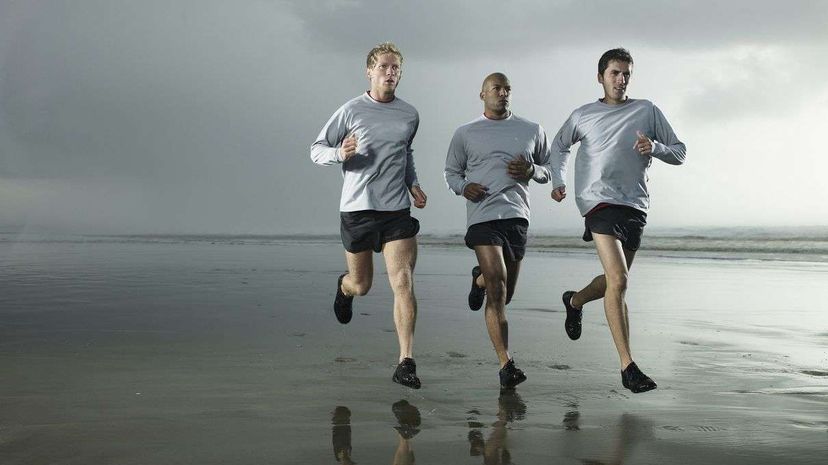
Swipe right on long-distance runners. Not only do they have amazing physical endurance on their feet, there's evidence they have better endurance ... ahem ... off their feet, too.
Here's the theory: This began back in our hunting-gathering days, when men practiced persistence hunting (running down prey until it's exhausted) to provide food. Individuals with aggressive and athletic traits would have had better hunting prowess, and more successful providers were considered more desirable for breeding.
Advertisement
But there's more to it than that. If you add in facial attractiveness, intelligence, a strong sex drive and strong sperm, and a better memory, and it's probably no surprise that distance runners are considered desirable as mates.
According to the results of a study conducted at Cambridge University, males with greater athletic endurance, cardiovascular efficiency and spatial awareness historically had — and continue to have — the evolutionary advantage. All of these attributes are signals of male reproductive fitness, both a man's reproductive potential and his reproductive success.
There is a known correlation between those whose brains and bodies were exposed to higher levels of testosterone during the first trimester of fetal development — considered masculinized — and what American culture considers masculine traits, such as dominance in certain sports.
"The observation that endurance running ability is connected to reproductive potential in men," explains the study's lead author Danny Longman in a press release, "suggests that women in our hunter-gatherer past were able to observe running as a signal for a good breeding partner."
While the study did not demonstrate that women do, in fact, desire distance runners more than other potential mates, it did provide evidence this endurance advantage is associated with prenatal androgen exposure in the womb. The most accurate way to figure out an individual's exposure to prenatal testosterone is based on pretty easy marker: finger length, specifically the 2D:4D ratio, which compares the length of the index finger (2D) with the ring finger (4D). Go ahead and look: how do your ring and index fingers measure up?
Exposure to higher levels of prenatal testosterone is associated with a lower 2D:4D ratio, and that means a longer ring finger compared to index finger. Higher estrogen levels, on the other hand — pun intended — are associated with a higher 2D:4D ratio, with index fingers the same or longer than ring fingers. Although it does, to a smaller degree, predict these traits in women, the lower 2D:4D ratio is typically a male ratio — there's even a study linking a lower ratio to longer penis size.
During the study, researchers scanned participants' hands for precise measurements when calculating 2D:4D ratios, and each participant ran a half marathon. The 10 percent of male runners measuring the greatest 2D:4D ratio ran an average of 24 minutes and 33 seconds faster than the 10 percent of men measuring the smallest difference in ring and index finger length. The average difference was smaller among female distance runners, an average difference of 11 minutes and 59 seconds between the same two groups.
Admits Longman, "Of course, hunting ability and reproductive success may both be correlated with another independent variable which is itself a cause of higher reproductive success, independent of the male's hunting abilities."
Advertisement